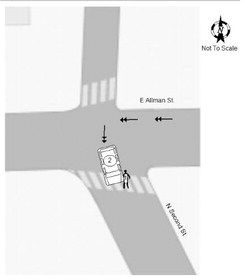Guard against ticks to prevent Lyme disease
Each year, more than 30,000 cases of Lyme disease are reported to the Centers for Disease Control and Prevention (CDC). This number, however, does not reflect every case of Lyme disease that is diagnosed annually; it is the most common disease spread by the bite from an insect.
Since May was Lyme Disease Awareness Month, it’s a good time to brush up on the type of ticks and which can cause Lyme disease.
Blacklegged ticks are the most common carrier of Lyme disease. These include deer ticks, wood ticks and lone star ticks, all of which are most active in Wisconsin, from May to September.
Finding the tiny insects on people and pets early, is important. If a bite leads to Lyme disease and it’s untreated, it can produce a variety of symptoms, including fever, rash, arthritis and facial paralysis in humans.
To prevent a tick bite, the CDC recommends the following: • Avoid wooded and brushy areas with high grass
• Use Environmental Protection Agency (EPA)-registered insect repellents containing DEET
• Wear long sleeves, long pants and long socks when outdoors for any length of time.
• Check clothing, body and hair carefully after coming indoors
• Check pets for ticks daily, especially around their ears, eyelids, tail and toes.
To remove a tick, grasp it with a narrow-bladed tweezers as close as possible to the skin, pull upward and out, with a firm and steady tension. Do not use petroleum jelly, a hot match, nail polish or other products.
Don’t squeeze, crush or puncture the tick’s body, which may contain infectious fluids. Do not twist the tick, which can cause the mouthparts to break off and stay in the skin. Clean the bite site with rubbing alcohol after removal and monitor that area of the skin.
Early signs and symptoms of Lyme disease, three to 30 days after a tick bite, include fever and/or chills, headache, fatigue and muscle aches, and a bullseye rash at the site of the bite (occurs in approximately 70 percent of infected persons, but not everyone).
Symptoms that occur months after a tick bite, are severe headaches and neck stiffness, loss of muscle tone or droopiness in face, severe joint pain, particularly in the knees, heart palpitations, numbness, and tingling or shooting pains in the hands, or feet.
If symptoms persist or worsen, emergency care should be sought.




